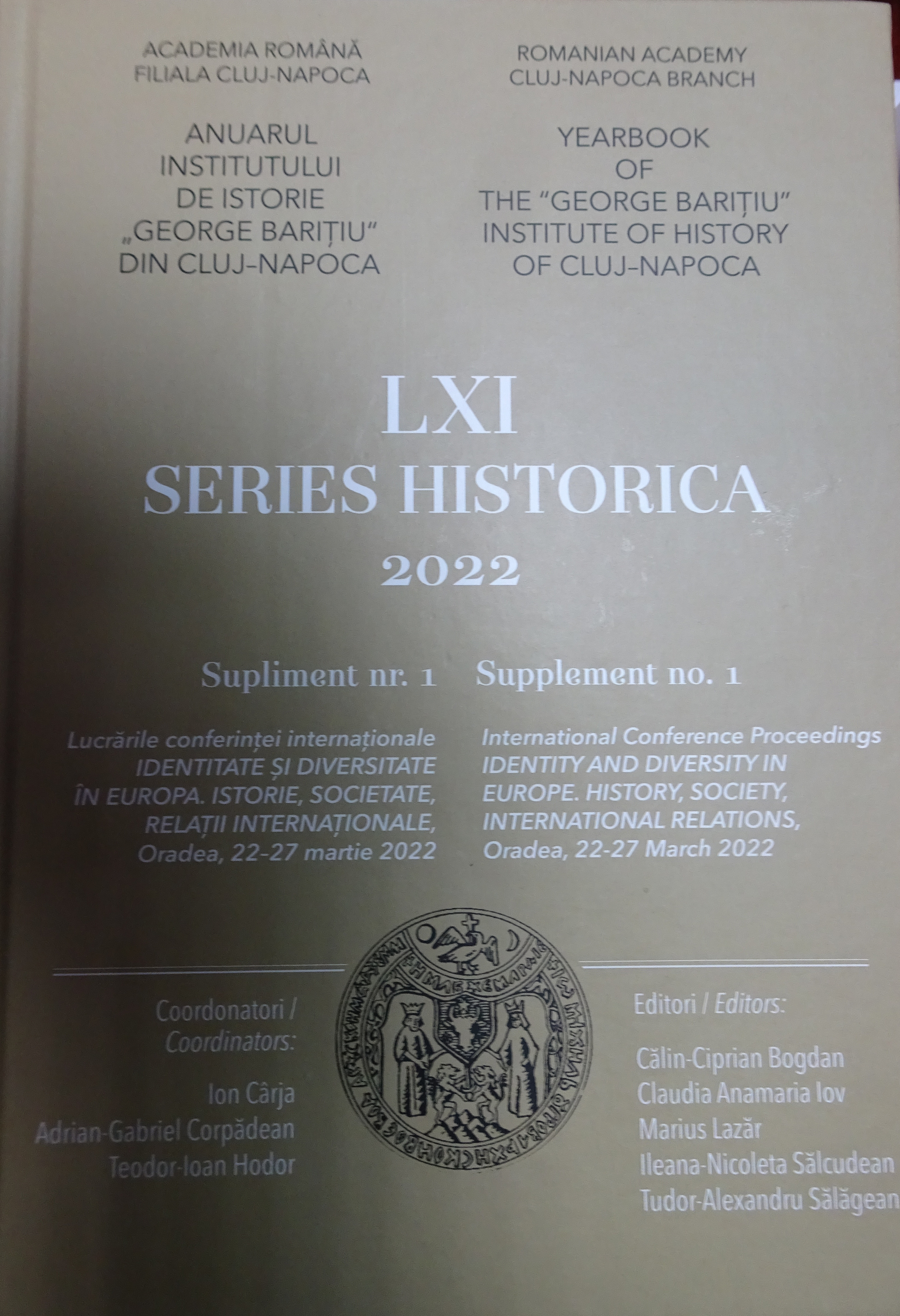Biserică și societate pe Valea Arieșului în primele decenii ale secolului XX
Church and Society in Valea Arieșului during the First Decades of the 20th Century
Author(s): Petruța Mioara Pop (Ghenescu)Subject(s): Social history, Pre-WW I & WW I (1900 -1919), Interwar Period (1920 - 1939)
Published by: Editura Academiei Române
Keywords: church; priest; community; faith; culture;
Summary/Abstract: The archival documents of the communities located on the Arieș River, from the interwar period, highlight the continuity, in a natural way, of the religious and cultural activity, despite the numerous difficulties that followed. If the files from the period of the First World War abound in documents suggesting the contribution of communities in donations and the establishment of women’s organizations that were involved in the treatment of the wounded or the collection of materials necessary for the Romanians on the front, the files that date back to the year of the union focus strictly on the problems related to the church. The proximity of 1939 demonstrates, however, the difficulty of the parishes in obtaining from the Directorate of Industrial Production, the galvanized plates necessary for the construction, or the repair of the roof or the tower of the churches. Interference between priests, community members and representatives of local, government authorities in the resolution and management of various crisis situations such as: the problem of moral behaviour in society, the erection, consolidation, or restoration of religious buildings, parish houses, or schools, acquisitions, or the presence and spread of epidemics, were carried out with difficulty, to all this being added the capricious weather, which often left behind significant material damage, forcing the locals to huge recovery expenses. The censuses of the 1910s, 1920s, 1930s reveal a slight demographic decrease of the population, followed by a gradual increase, a generalized phenomenon on the entire area of the Arieș Valley, a period that corresponds to the numerous cases of tuberculosis and dysentery among children and adults over 40 years of age, due to misery, hunger and poor living conditions. The overall analysis of the priests and parishes in the Arieș Valley, at the beginning of the Second World War, demonstrates a unitary and constant evolution, the basic principles being almost identical to all parishes, regardless of the confession, the priest having an essential role in promoting the conduct and moral religious concepts on the one hand, and on the other hand in exposing and implementing the laws of the state. In this ambience and in those that will follow after 1947, the Church will gradually claim its definition as a social and complementary institution to the Romanian state, permanently adapting to the coordinates of contemporary circumstances.
Journal: Anuarul Institutului de Istorie »George Bariţiu« - Series HISTORICA - Supliment
- Issue Year: 1/2022
- Issue No: LXI
- Page Range: 87-100
- Page Count: 14
- Language: Romany

